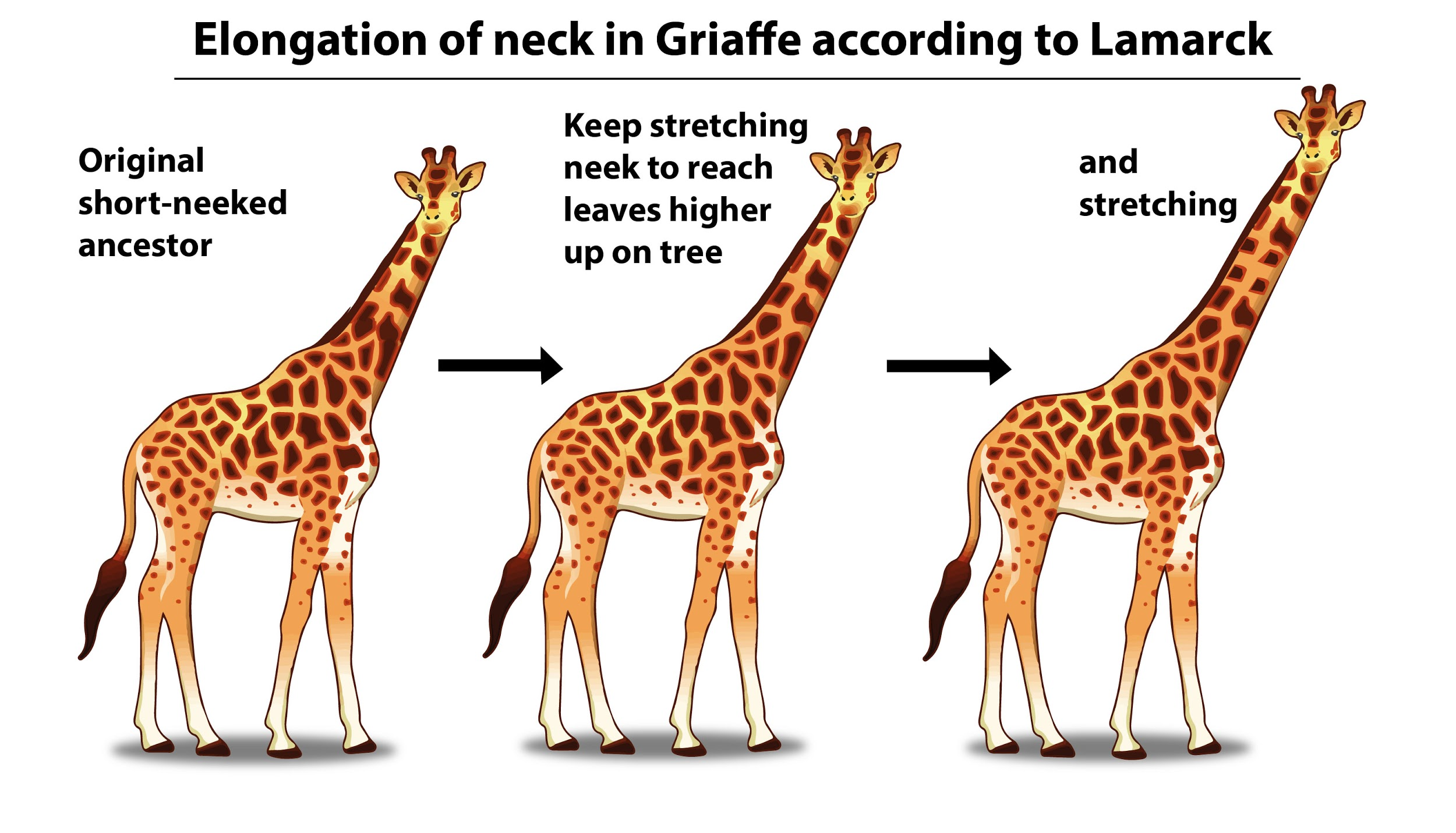
The theory of inheritance of acquired character was given by
(a) Wallace
(b) Lamarck
(c) Darwin
(d) De Vries
Answer
571.5k+ views
Hint: First theory of evolution by adaptation was given by him in his famous book ‘Philosophie Zoologique’. According to his theory in every generation, new characters are acquired and transmitted to the next generation, so that new characters accumulate generation after generation. After a number of generations, a new species formed.
Complete answer:
According to the theory of Lamarck:
- Organisms tend to increase in size and complexity with time.
- Change in the environment made special demands on organisms. The formation of a new organ in the body is the result of a specific need felt by the animals.
- The extent of the development of organs and their efficiency is proportional to their use and disuse of the organ.
- The observable characteristics acquired by the parents during their lifetime can be transmitted through reproduction to the offspring.

- Lamarck noticed that organisms adapted to a particular habitat and had well developed specialized organs.
- Law of use and disuse:
He proposed that if an organ is used a lot it develops and strengthens.
If it is not used it will degenerate.
- According to Lamarck, the long neck of the giraffe has evolved as a result of generations of giraffes stretching their necks to feed on the leaves of tall trees due to food shortage.
- According to him the favorable acquired character are inheritable and are transmitted to the offsprings so that these are born fir to face the change in environmental conditions and the chances of their survival increased.
So, the correct answer is, ‘Lamarck.’
Note:
- Vestigial organs:
Comparative anatomy showed that those organs resembled those which were much more developed, with particular functions, in other species. Example: the appendix in humans is vestigial whereas in ruminant appendix contain bacteria for cellulose.
- Changes in environmental factors like light, temperature, medium, food, air, etc or migration lead to the origin of needs, living organisms have to exert special efforts like changes in habits or behavior.
Complete answer:
According to the theory of Lamarck:
- Organisms tend to increase in size and complexity with time.
- Change in the environment made special demands on organisms. The formation of a new organ in the body is the result of a specific need felt by the animals.
- The extent of the development of organs and their efficiency is proportional to their use and disuse of the organ.
- The observable characteristics acquired by the parents during their lifetime can be transmitted through reproduction to the offspring.

- Lamarck noticed that organisms adapted to a particular habitat and had well developed specialized organs.
- Law of use and disuse:
He proposed that if an organ is used a lot it develops and strengthens.
If it is not used it will degenerate.
- According to Lamarck, the long neck of the giraffe has evolved as a result of generations of giraffes stretching their necks to feed on the leaves of tall trees due to food shortage.
- According to him the favorable acquired character are inheritable and are transmitted to the offsprings so that these are born fir to face the change in environmental conditions and the chances of their survival increased.
So, the correct answer is, ‘Lamarck.’
Note:
- Vestigial organs:
Comparative anatomy showed that those organs resembled those which were much more developed, with particular functions, in other species. Example: the appendix in humans is vestigial whereas in ruminant appendix contain bacteria for cellulose.
- Changes in environmental factors like light, temperature, medium, food, air, etc or migration lead to the origin of needs, living organisms have to exert special efforts like changes in habits or behavior.
Recently Updated Pages
Master Class 12 Business Studies: Engaging Questions & Answers for Success

Master Class 12 Economics: Engaging Questions & Answers for Success

Master Class 12 English: Engaging Questions & Answers for Success

Master Class 12 Maths: Engaging Questions & Answers for Success

Master Class 12 Social Science: Engaging Questions & Answers for Success

Master Class 12 Chemistry: Engaging Questions & Answers for Success

Trending doubts
What are the major means of transport Explain each class 12 social science CBSE

Which are the Top 10 Largest Countries of the World?

Draw a labelled sketch of the human eye class 12 physics CBSE

How much time does it take to bleed after eating p class 12 biology CBSE

Explain sex determination in humans with line diag class 12 biology CBSE

Differentiate between homogeneous and heterogeneous class 12 chemistry CBSE




